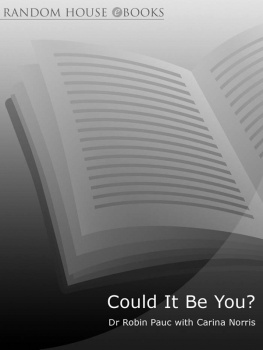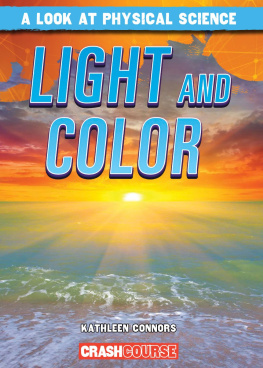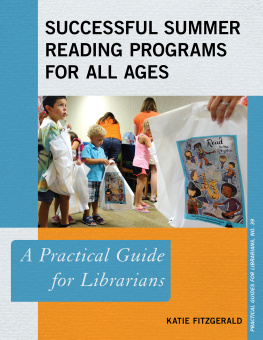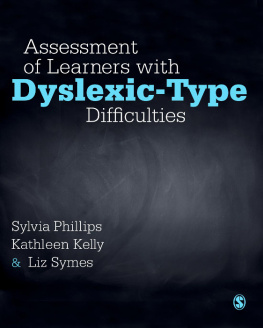Contents
Guide

The author and publisher have provided this e-book to you for your personal use only. You may not make this e-book publicly available in any way. Copyright infringement is against the law. If you believe the copy of this e-book you are reading infringes on the authors copyright, please notify the publisher at: us.macmillanusa.com/piracy.
Contents
For Katie and Jacob and every child and adult interrupted by light
To help you stay on top of the latest information on lights effects on the brain, look for New Information at www.thelightbarrier.com
ACKNOWLEDGMENTS
Dozens of people in several parts of the world have made this project possible. First and foremost, our familys thanks to the experts who have worked diligently for years to document, understand, and address light-based reading difficulties: Helen Irlen, Arnold Wilkins, Bruce Evans, Greg Robinson, and Paul Whiting. Additionally, this project was made possible by every individual who allowed his or her personal story to be told. Our thanks to you for sharing parts of your lives with others. Our family is indebted to those who helped identify and address Katie and Jacobs challenges with aspects of light. To Jean Hawkins, Michelle Orton, and Kirstie Lewis, thank you. And to Kirill Federspiel, Mat Thompson, and Rich Villacres, special thanks for the graphic and photographic talents that helped us to understand how Katie and Jacob perceive the world and printed word. Special friends encouraged us when others were skeptical. On behalf of Katie and Jacob: Mrs. Davis, Mrs. Hiler, Mr. Adamson, Mrs. Van Beek, Mrs. Hamar, the Phillips familyyou are the greatest. To each of our special Sunday-night friends, thank you for your support and encouragement. To those around the Northwest who sent prayers up for the completion of this book, may the peace you provided me be returned to you. Sue, Joanne, Jeanne, Anne, Linda, Mom, Jennifer Reeve, agent Jeff Kleinman, and editor Heather Jacksonmy gratitude goes beyond words. Finally, to the love of my life, Paul: thank you for your support and encouragement.
FOREWORD
One of the challenges in the practice of child psychiatry is obtaining an authentic diagnosis. Each child is unique. Every child has individual complexities related to growth, development, neurobiology, personality, and genes. As a medical sleuth, putting the pieces of the puzzle together, describing the initial conclusions to the parent and the patient, and then watching for the reaction that reflects thats it! is a very satisfying feeling.
The Light Barrier , written by Rhonda Stone, is a search for authenticity. The book portrays a dramatic example of the frustrating and lengthy journey of a family in search of an underlying reason and a diagnosis for the complex reading difficulties of their children.
In my own practice, I became intrigued with childhood sensory problems when many of my young patients referred for symptoms of attention deficit/hyperactivity disorder were described by their parents as sensitive. Some had unexplained anxiety when they were exposed to bright light. Many of these children disliked loud noises, had rigid opinions about the clothing they wore, and were diagnosed as having problems with reading. Their symptoms were often mistaken for obsessive-compulsive traits.
Patterns and associations began to emerge. Uncovering what is really going on is the goal for an authentic diagnosis. I asked myself, what is the cause of their reading difficulties and what triggers their anxiety? Then I questioned the children and the adolescents with an open mind and interviewed their parents. I also had teachers and parents fill out behavioral rating scales. I was looking for a diagnosis that fit the patients difficulties at home and at school.
Then S, a nine-year-old boy with a fifteen-year-old swagger, walked into my office. He had a history of poor attention in school, anger at home, and reading difficulties. He brought with him a pair of colored lenses that he insisted helped him read in class and do his homework. During the next thirty minutes, S and his mother talked of scotopic sensitivity syndrome, also called Irlen syndrome. I had heard of it previously, but had not spent time reviewing the subject.
As we talked, interesting similarities to complaints I had heard from patients who had trouble with reading and who were sensitive to light began to make sense. Reading by the Colors , a book by Helen Irlen, helped me organize an approach to the patients I saw who had reading problems and/or were light-sensitive.
I wanted to learn more about the subject. I found that many people, unless asked how they felt about light, did not know they had sensitivity that interfered with their reading. They assumed the patterns of white spaces (rivers) they saw within the dense text were normal. A graduate student I spoke with told me that she always thought it was common to see patterns on the page. A slow reader who regularly experienced eyestrain, she had worked very hard for her grades. Her reaction with her specifically chosen colored lenses: I feel incredible and much calmer now; and I read much faster!
It became clear to me that there was a common thread within these stories. Accompanying the difficulties with reading and, in many cases, depth perception was a feeling of stress, tension, and anxiety. Colored overlays and/or colored lenses could provide a feeling of calmness. For such people certain aspects of light were the problem.
Many teachers, parents, specialists in eye care, psychologists, and physicians are unaware of Irlen syndrome. But, more important, they are unconvinced that colored lenses have the potential to provide effective treatment for sensitivity to light.
Irlen syndrome is a perceptual disorder that may coexist with migraine headaches, ADHD, various developmental delays, learning disabilities, head injury, bipolar disorder, and a spectrum of anxiety disorders.
Is it rare? During a fifteen-month period, I evaluated 460 patients, including both adults and children, at a brain-imaging center. Using questions that would uncover problems related to light sensitivity and reading difficulties, I found 122 patients who met the criteria for further testing at an Irlen center. Fifteen patients had family members who also experienced sensitivity to light while reading. Forty of the 122 were treated with tinted lenses and either completed subjective rating scales or were interviewed before and after they used overlays and/or tinted lenses. All subjects were enthusiastic about their improvement. For these patients, Irlen syndrome is an authentic diagnosis.
The Light Barrier by Rhonda Stone should be read. It describes one parents quest to uncover the reasons for her childrens struggles with reading and, ultimately, how this important life skill impacts a childs sense of self. This book provides a road map for understanding the relationship of light to our perception of written language.
We need not hesitate to intervene because we do not have a conclusive answer as to why colored lenses or colored overlays help some of us who have perceptual distortions and physical discomfort when exposed to certain components of the light spectrum. Instead, we as parents, educators, health professionals, and scientists should continue to investigate this unfolding mystery of light.
Robert Dobrin, M.D., F.A.A.P.
Dr. Robert Dobrins professional background began in pediatrics as a clinician/researcher in pediatric nephrology/transplantation, immunology, and critical care. Since 1991, after additional training, Dr. Dobrin has practiced behavioral pediatrics and child/adolescent, adult psychiatry. His research interests have included subgrouping ADHD, childhood bipolar disorder, and sensory dysfunction in both children and adults. He has subspecialty training in addictionology and eating disorders.










